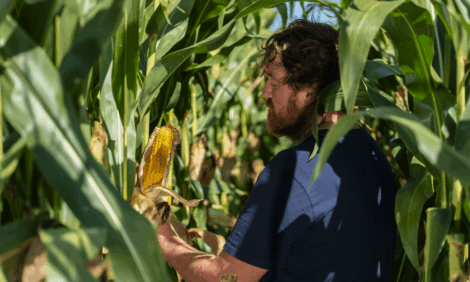



Meat Industry Faces a Squeezed Middle Market
The meat industry faces three separate challenges - increasing and maintaining margins, accommodating greater uncertainty in the business environment and responding to market segmentation, writes Chris Harris TheCattleSite Editor in Chief.This was the message from Prof Phil Thompson chairman of the Quality Meat Scotland R&D committee at the Quality Meat Scotland R&D Conference in Perth.
He said the global meat industry will have to face up to the needs of a growing global population - expected to reach 9 billion by 2050 - as well as the problems of climate change.
The food industry also has to face up to the challenges of national and international food security, diet and health issues, land use and energy shortages as well as the diminishing mineral reserves and global economic problems.
Prof Thomson said that the future prospects for agriculture look challenging particularly in the red meat sector.
However he said that these challenges are also great opportunities for the meat sector.
"Individual businesses and the industry as a whole will therefore need to grasp the opportunities and address the challenges," he said.
He said the industry could not afford to hold on to the status quo.
The sector will find that it will have to find answers to many different questions using existing and new technologies, improved efficiency, reduction of waste and an ability to innovate.
He said among the challenges will be the cost and availability of energy in "all shapes and sizes".
"Bioenergy has its positives and its negatives," he said.
"You can grow for it but it takes land to grow for it and all along the way governments will intervene."
The main influences on a changing food and agricultural system will be both population growth and climate change and, Prof Thomas said, that while climate change is not going to be felt so dramatically in the northern hemisphere, its impact is going to be felt in regions from the equator outwards.
He also warned that food prices that saw a global peak in 2008 could see another peak this year as cereal and oil prices rise.
However, while cereal and oil prices could reach new high levels, the prices for meat will not peak to such a degree.
"This is because in underdeveloped countries the populations turn from meat to cereals in hard times," he said.
The scenario in the developed nations such as Europe will be different, because there is a small number of buyers in the middle between the large numbers of food producers and the large numbers of consumers.
This dynamic of the market will mean that there will be a growth in the low end products and a growth in the high end products, but the middle markets will be squeezed.
Prof Thomas told the conference that with a squeezed middle market meat producers will have to find their area of sales either at the top end or the low commodity end as the market polarises.
January 2011


